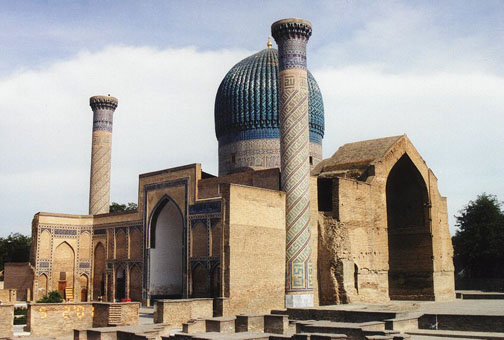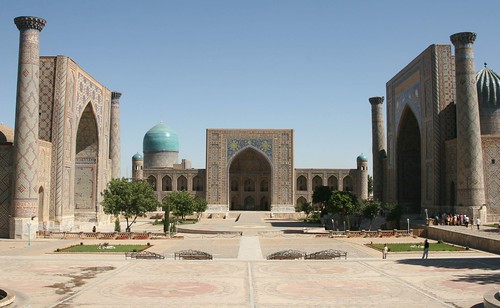
The Silk Road was a bustling trade route that vertebrate desolate expanses of Central Asia for centuries, until the opening of navigation was reliable down the carriage of goods by land. At the heart of those roads was the legendary city of Samarkand, the core of the most beautiful architectural expressions of what is now Uzbekistan.
Central Asia is the area farthest from any ocean. This is a vast region dominated by a vast nature of categories covered by myriad traditions, its mountains higher than 4000 meters of altitude deserts and offering an endless palette of variegated colors.
In these landscapes hit by a convulsive history lies Uzbekistan, a former Soviet republic that gained independence, reluctantly, in 1991 and where he shines with own light the city of Samarkand in the southeast of the country.
Samarkand is situated on the banks of the river Zeravshan since at least 2500 years. He was one of the nerve centers of the Silk Road, to become a real meeting point between the Roman and Chinese empires. At the end of the fourteenth century Tamerlane makes capital of his empire, then a flourishing knowledge unparalleled.

Although today this city, for the most part, is a city that follows the architectural Soviets (with wide tree-lined avenues and gray and functional buildings), still preserves some of its legendary beauty as it ESCANDE Reguistán Square in the center the city like a giant glittering jewel in the madrasas of the XV and XVII century.
Madrasas were centers of the ancient teachings in the Koran which hosted dozens of students and the holy book of Muslim laws. The three buildings that make up the square ajestuosa are Ulughbeck of the Madrasa, built in 1417 the oldest of three and madrassahs Sher Dor and Tilla Kari, erected in the seventeenth century.
All three have impressive madrassas frontispieces profusely decorated with tiles and bricks Persian mode, forming an infinity of figures plants, stars and animals. Sher Dor, in particular, presents a mosaic composed of two cats that swooped low over a gamo two golden suns.
These buildings make up a scene of beauty that certifies the legend of this city, which is called the pearl of Asia, and which Alexander sighed captivated (even though, when the Greek conquest, Samarkand was just an outline of what later became).
Samarkand also found in the ruins of Bibi Janim, which was the largest mosque of Islam, and you can also browse in the remainder of the astronomical observatory Ulughbeck, a three storey building and 30 meters in diameter, built in 1420 and which today can only be considered a huge bend in the notch ground. Ulughbeck, Tamerlane’s heir, felt more attached to the science for the achievements, he discovered more than 200 stars and unknown astronomical calculations performed very accurately. He was ordered to behead King illustrated by his own son, who also ordered the destruction of the observatory.

Also from the Timurid era compound is Gur Emir, originally composed by a madrasah and a janaja (palace destined for distinguished guests and lecturers) and later expanded with a beautiful mausoleum dedicated to the memory of Muhammad, grandson of Tamerlane. At present, only the south wall and the main portal of the first two buildings and the monumental mausoleum topped by a spectacular dome ribbed deck tiles and blue shapes.
Leave a Reply
You must be logged in to post a comment.
Recent Comments